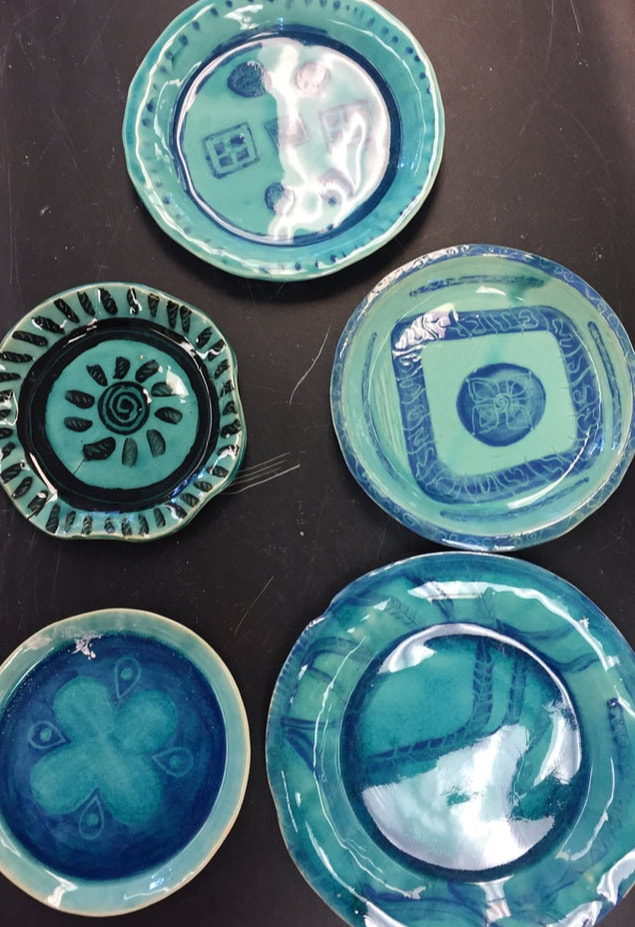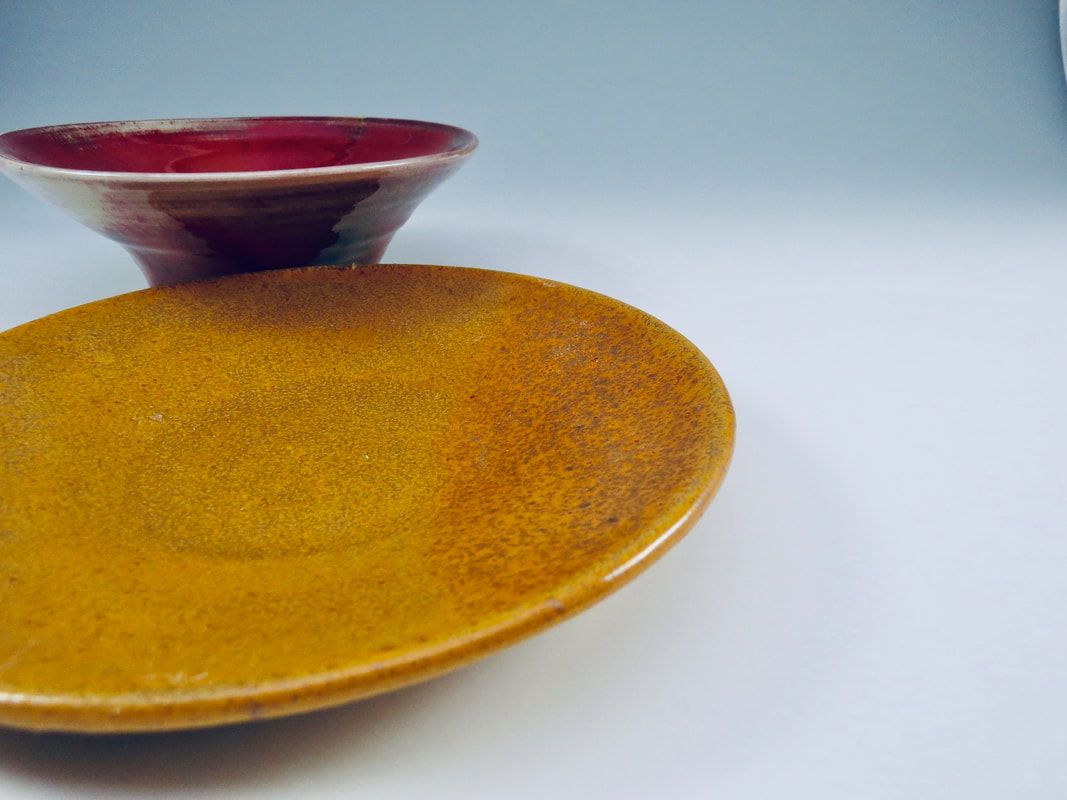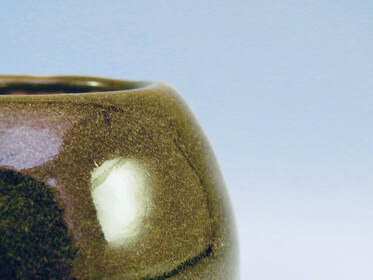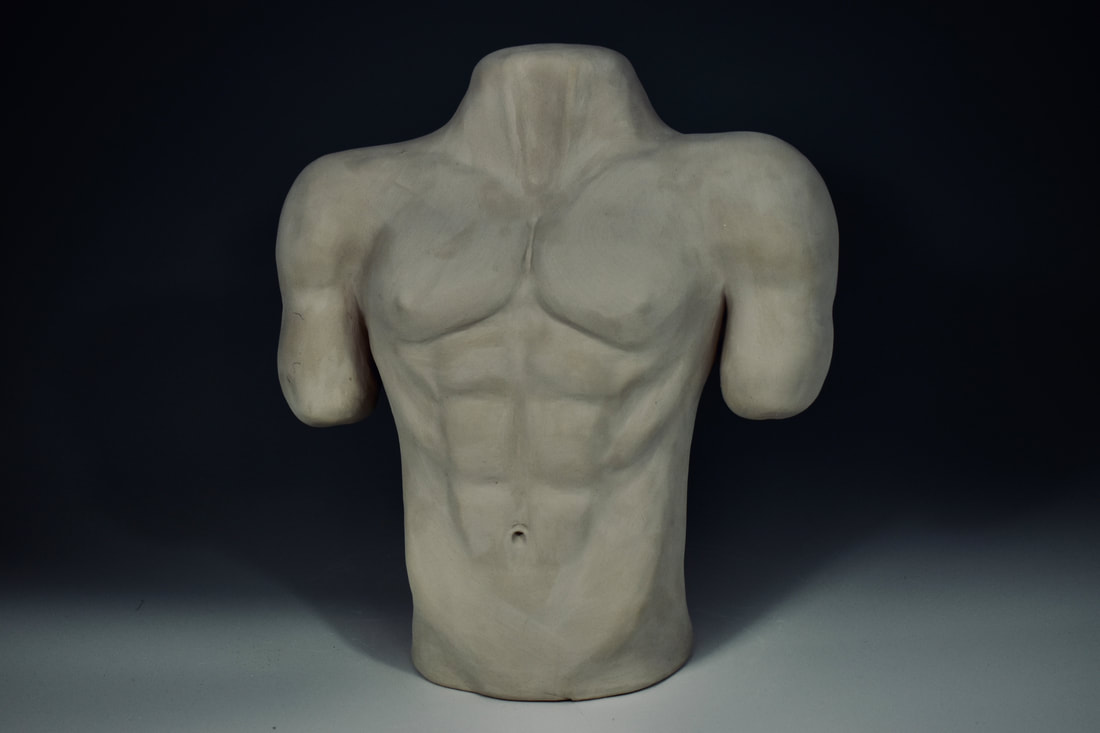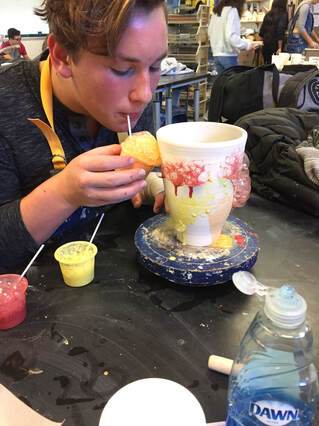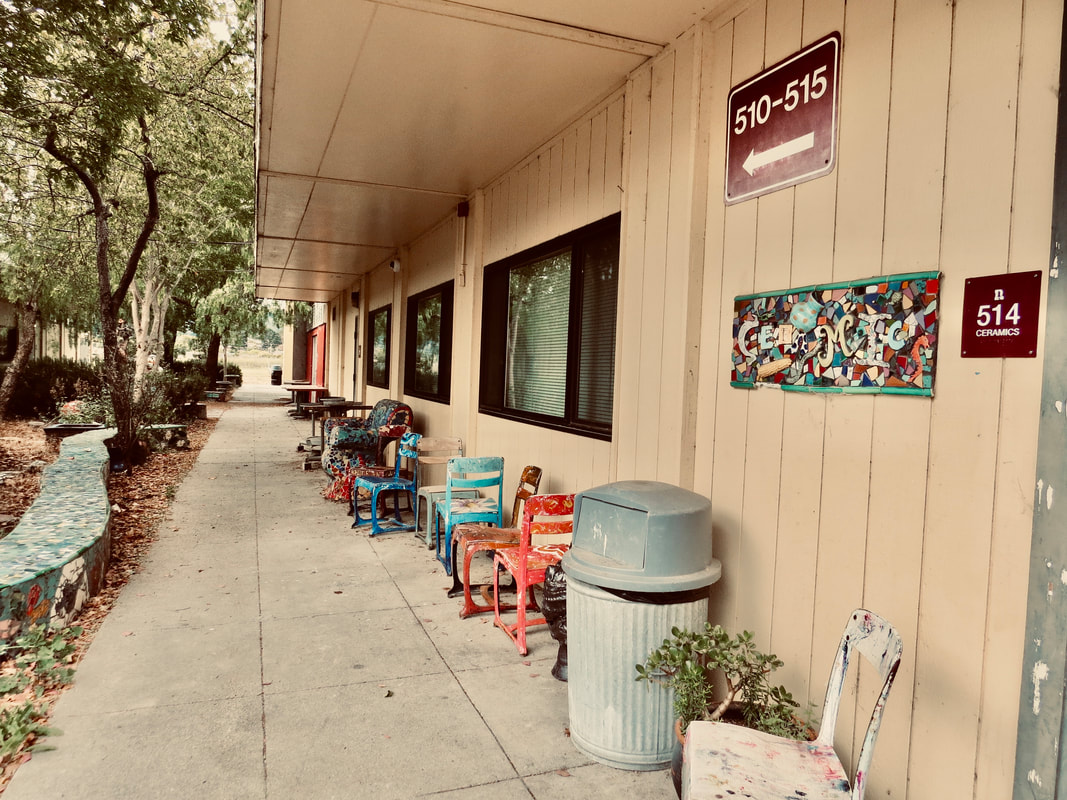Ceramics is a functional, sculptural and historical medium emphasizing concepts of three dimensional design. Our studio is exceptionally equipped to provide a wide range of opportunities for explorations in traditional and contemporary ceramic arts. Instruction includes the use of the potter's wheel, hand construction methods, glaze application and formulation, printing and surface decoration techniques and experimental use of materials. Students may create their own projects along with class assignments. Individual initiative, success, participation, and fun are emphasized. Grading is based on personal effort, growth and mastery. Students may stay in the program for all 4 years at Redwood with the option for a capstone Advanced Placement (AP3D) course for their senior year.
CERAMICS 1
|
This beginning level ceramics course is scheduled with Art Explorations as a year long sequence.Ceramics is a functional, sculptural and historical medium emphasizing concepts of three dimensional design. Instruction includes the use of the potter's wheel, and hand building construction techniques to create hollow forms, coiled forms, and forms from slabs of clay. Surface decoration techniques will include glaze, underglaze, transfer printing, slip, stains and textured designs. Students may create their own projects along with the teacher's assignments. Some of the class projects will include: sculpted animals, whistles/ocarinas, leather hard slab vases, hump bowls, wheel throwing and trimming, sgrafitto with slips, bas relief, underglaze painting, coil large vase, majolica glazing techniques, high fire and medium fire glaze use, historical period pieces and mosaics. Individual initiative, success, participation, proper use of materials and equipment, and fun are emphasized.
|
CERAMICS 2-3
|
This intermediate level Ceramics class (year long) is for motivated students who want to further develop and apply the skills learned in the first year. Students will gain a deeper understanding and ability to use more complex forming techniques and decorating processes for their work. They will practice glaze application and finishing methods. Students will investigate and reproduce a ceramic piece from a historical period within the history of ceramic art. Projects may include: figure sculpture, thrown and altered forms, working with paper clay, lidded forms, larger scale forming techniques, crystal glazes, slip casting, working with different clay types.
|
CERAMICS 4-5
|
The 3rd year of Ceramics is the intermediate to advanced level for the serious and motivated students who have demonstrated talent and skill in the medium of clay. Instruction will include kiln firing, advanced glaze preparation, complex forms, historical and contemporary decorative processes, looking at sources and natural systems of inspiration, printing on lay and sculptural techniques, sculpting the head. Students will investigate and find inspiration from a contemporary artist's work. Students will participate in the design of their own course of study to focus on topics of exploration, growth and mastery.
|
CERAMICS 6-7
|
The 4th year of Ceramics is the advanced level for serious, self-directed and motivated students who have a comfortable foundation in the skills, methods, use of materials of a ceramics studio, and who wish to challenge themselves. Students will design their own course of study built on goals, growth areas, topics of exploration, and culminating work. They will work closely with the teacher as their guide for support as needed. Advanced students also actively participate in managing the studio classroom--loading/unloading kilns, recycling clay, helping to teach other students, mixing glazes.
|
honors ceramics 4-5
|
Honors 4-5 is a more challenging 3rd year option . It is an in-depth focus in the art of Ceramics and related materials, expanding and adding depth to the existing program for Ceramics 4-5. This year long course is intended for Ceramics students who want a challenge above the expectations of Ceramics 4-5 and want a good preparation for the option to take AP3D. The additional projects and more in-depth work align with the AP3D program and include preparing for a culminating student art show, developing one's own artistic voice in a personalized approach to class assignments and projects, peer teaching, visiting museums and galleries outside of the classroom and preparation of a digital portfolio. The overall goal of this course is for the student to authentically think and work as an artist and as a contributing member of an artistic community. Conference with the teacher is required for entrance.
|
AP studio art: 3d portfolio
General Description: This is a one year course intended for highly motivated students who are seriously interested in the study of Ceramics and/or Sculpture and who show promise in their 3rd year of Ceramics or Sculpture. Students will follow the national AP course of study culminating in the submission of a digital portfolio of slides for the College Board. Students will participate in guided art critiques, learn how to professionally photograph their 3D artwork, create work with intent and awareness of the language of aesthetic appreciation, evolve a body of work ("The Concentration") which challenges and expresses their artistic ideas and technical mastery of materials. Growth and mastery underlie the student goals.
To take this course, students are required to present a digital portfolio of past work which must be approved by the teacher. Generally, students should have taken Ceramics 1, 2, 3 and 4 in preparation for the AP3D level. Students are expected to have a solid foundation in clay and glaze skills and techniques, an understanding of 3D design, and a familiarity with historical styles and periods in Ceramics history.
Expectations of students: Students will have homework reading and writing assignments in the first semester. The writing will consist of written answers to study guide questions. Students will use a college level text and other relevant reference and resource materials. Students will periodically conference 1:1 with the teacher for review of their work. Meetings will take place outside of the class during mutually convenient pre-arranged times.
It is recommended that students spend time outside of class meetings to work on their projects. While this is not required, students who spend additional time making their work get higher scores on their portfolios. See the teacher for available studio times.
After submitting the Portfolio: The portfolios are submitted digitally in early May. Students will prepare a Powerpoint slide show of their portfolio and present it to the rest of the class. AP3D students will then have a specific class assignment from the teacher. This assignment will complete their requirement for the course.
Students may gain college credit and placement, but this is determined by individual colleges and universities.
To take this course, students are required to present a digital portfolio of past work which must be approved by the teacher. Generally, students should have taken Ceramics 1, 2, 3 and 4 in preparation for the AP3D level. Students are expected to have a solid foundation in clay and glaze skills and techniques, an understanding of 3D design, and a familiarity with historical styles and periods in Ceramics history.
Expectations of students: Students will have homework reading and writing assignments in the first semester. The writing will consist of written answers to study guide questions. Students will use a college level text and other relevant reference and resource materials. Students will periodically conference 1:1 with the teacher for review of their work. Meetings will take place outside of the class during mutually convenient pre-arranged times.
It is recommended that students spend time outside of class meetings to work on their projects. While this is not required, students who spend additional time making their work get higher scores on their portfolios. See the teacher for available studio times.
After submitting the Portfolio: The portfolios are submitted digitally in early May. Students will prepare a Powerpoint slide show of their portfolio and present it to the rest of the class. AP3D students will then have a specific class assignment from the teacher. This assignment will complete their requirement for the course.
Students may gain college credit and placement, but this is determined by individual colleges and universities.
